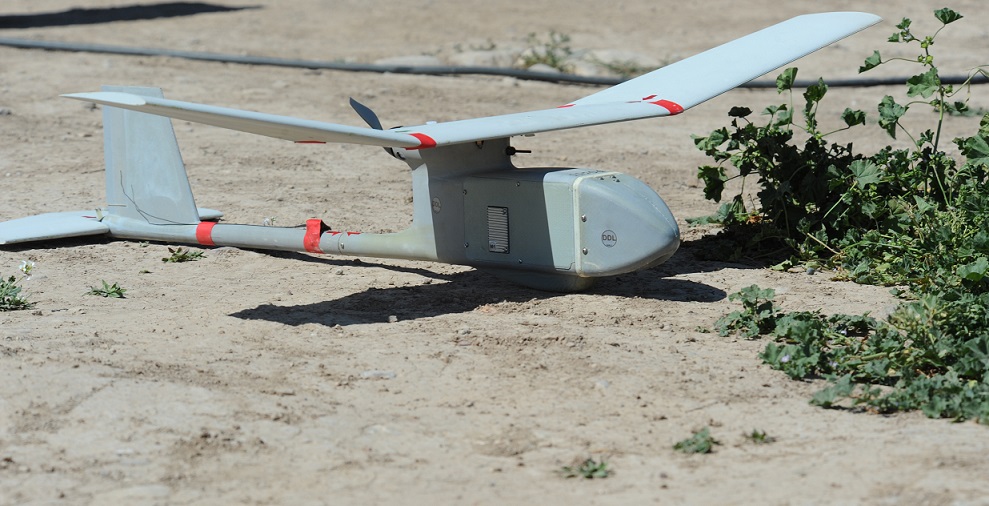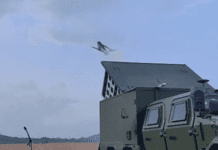This post is also available in:
 עברית (Hebrew)
עברית (Hebrew)
A counter UAV system was recently demonstrated at the US military MFIX maneuver. DeTect, the developers of Harrier, say they originally built the systems to protect Air Force bases from birds, causing problems when they crossed paths with an aircraft. The developers of the low-cost system for the detection and tracking of small birds adapted their system to meet the growing threat of unmanned aerial systems.
The traditional Harrier system has been available to consumers for some time but made its MFIX debut December 2017 with the goal of putting a soldier behind the controls to get their feedback.
According to army.mil, the system uses a thermal imaging camera so the radar can track a target across the landscape in addition to having eyes on target for a visual confirmation. The thermal allows the user to track targets at night and also in inclement weather. The developers are working on integrating maneuver aviation fires integrated application (MAFIA), a communications system, to enable soldiers to disrupt the system on a drone.
What’s unique about the Harrier jammer in comparison to other counter-UAS platforms is that it is able to operate directional and omni-directional depending on the need. Directional negation allows the user to see where friendly and enemy forces are on a screen and choose which nodes to defeat to avoid doing collateral damage. Omni-directional negation sends an umbrella defense, negating all UAVs within its radius.
A new, smaller platform that performs the same functions was also developed. Both platforms have smaller generators that allow the systems to operate for long periods of time without needed maintenance, freeing troops to focus on their missions.


























